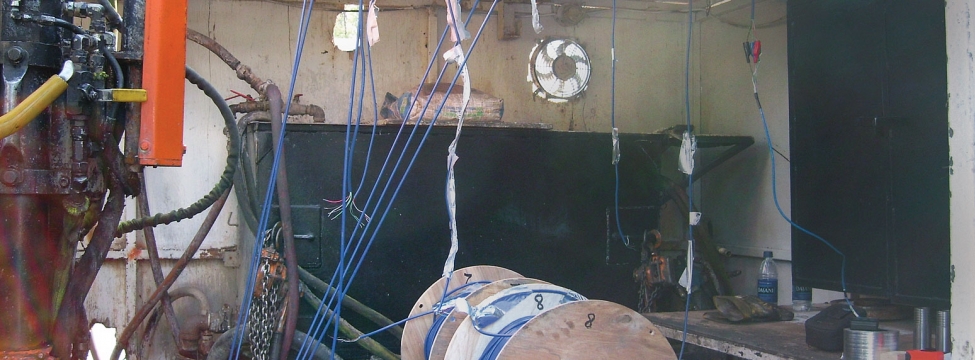To serve you better, our new website displays information specific to your location.
Please visit the site and bookmark it for future use.
Collecting 3D data for dewatering of an underground uranium mine in Canada
Predicting the volume and quality of groundwater inflows to a mine requires 3D characterisation of the hydrogeology in and around the mine site.
Full characterisation requires not only transmissivity, or measurment of the ability of rocks bordering the mine to transmit force and water pressure, but separate values of horizontal (Kh) and vertical (Kv) hydraulic conductivity of the units, and the spatial distribution of these values. With increasing distance from the mine, Kv values generally decrease in importance, while Kh and storativity values become more important.
Hydrogeologic studies commonly “piggyback” exploration or geotechnical drilling programs. Consequently, hydrogeologists, at least in early and middle stages of investigation, commonly make use of diamond-core holes, working inside small-diameter drill rods. For a proposed underground mine in northern Canada, SRK designed a program to test Kv across a thick sequence of cemented and recrystalised sandstones, with only an LF-50 core rig to install wells. Numerical pre-analysis showed that to produce sufficient pumping stress on the aquifer to determine hydraulic characteristics, would require a pumping rate of 10L/s for 3 days.
The pumping well included sinking PQ drill rods to 300m, attached to HQ drill rods to 665m depth. These rods were sealed with heavy drilling mud and cemented through the lower 30m. An NQ core hole was telescoped to a total depth of 715m, and a 38mm wire-wrap screen was lowered through the NQ rods to the bottom of the hole, sticking up loosely into the HQ rods. In a parallel core hole 18m from the test hole, packer testing defined a vertical profile of Kh, and eight vibrating-wire transducers were installed to monitor the pumping test.
Pumping was achieved by airlifting in the upper PQ drill rods, and averaged 9.6L/s over the 74-hour pumping period. The PQ and HQ rods were cut and retrieved after the test. Pressure changes in the transducers were analysed using a simple MODFLOW model, and showed that high-angle fractures in the sandstones result in Kv values an order of magnitude greater than Kh values. The findings were used for numerical estimation of inflow rates under different mining and mitigation scenarios.
Roger Howell: rhowell@srk.com
|
You can download a PDF of the entire |
PDF A4
|
PDF Letter
|
|
|
|
Our newsletters focus on specific areas of interest to earth resource professionals and clients. Each is available as an Adobe Acrobat PDF file. If you don't already have Adobe's PDF reader, you can download it free.


